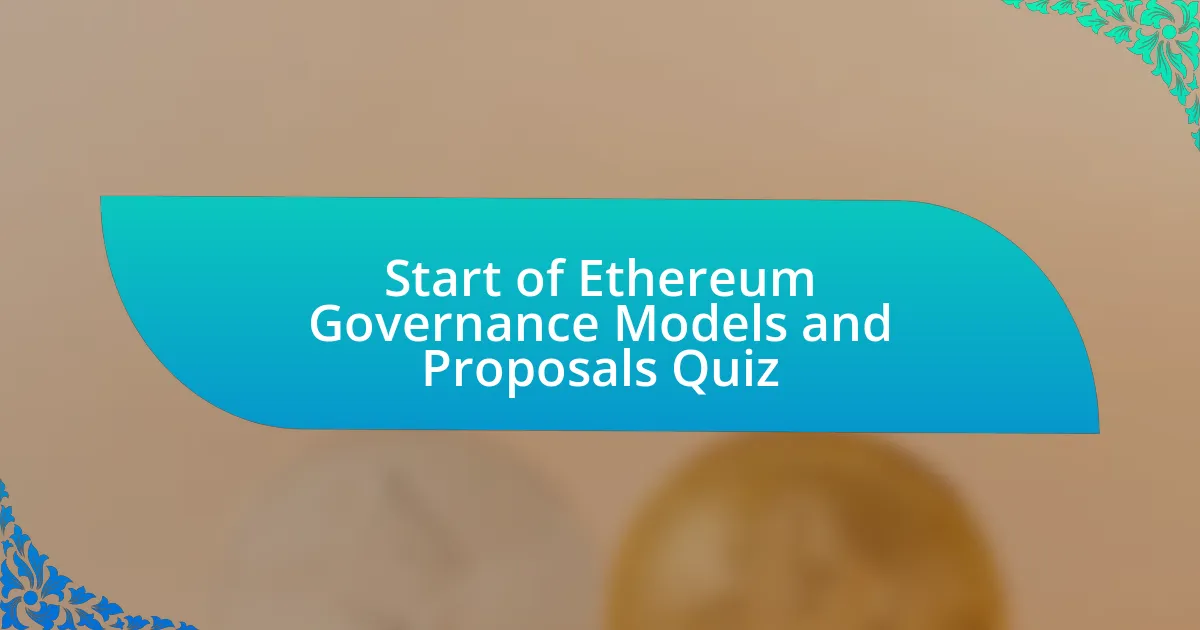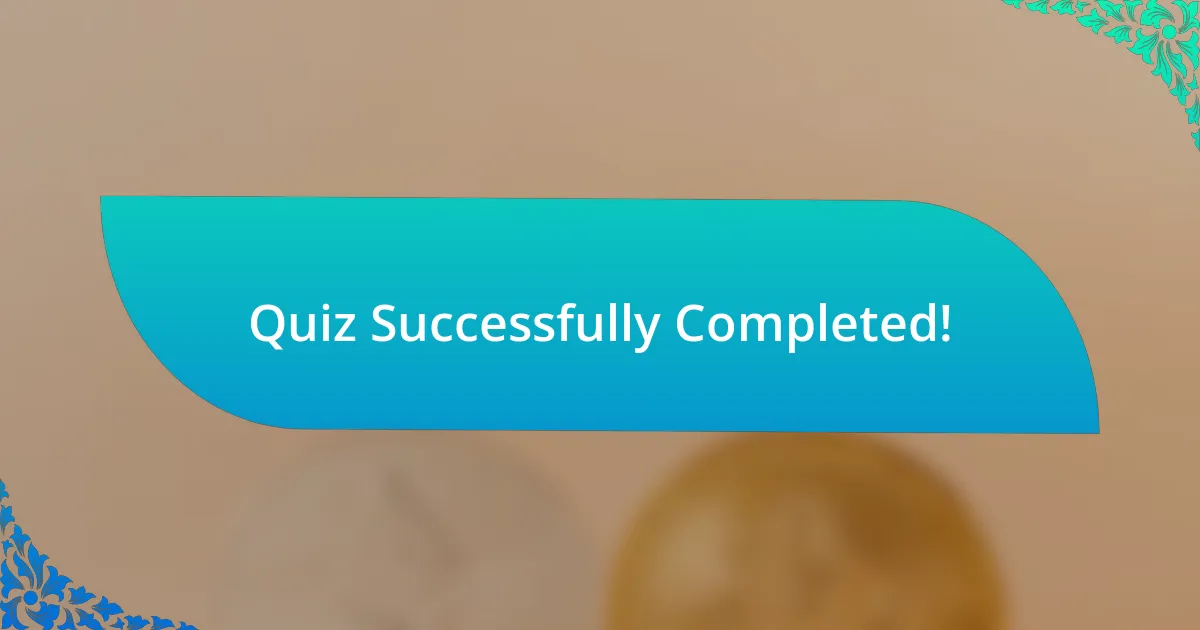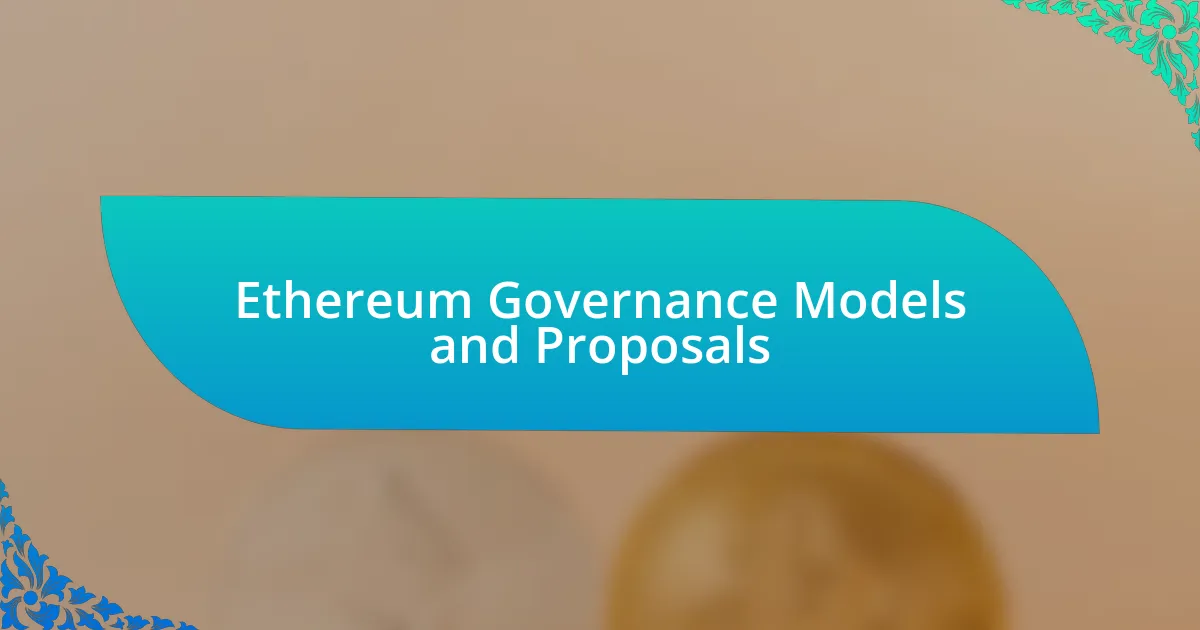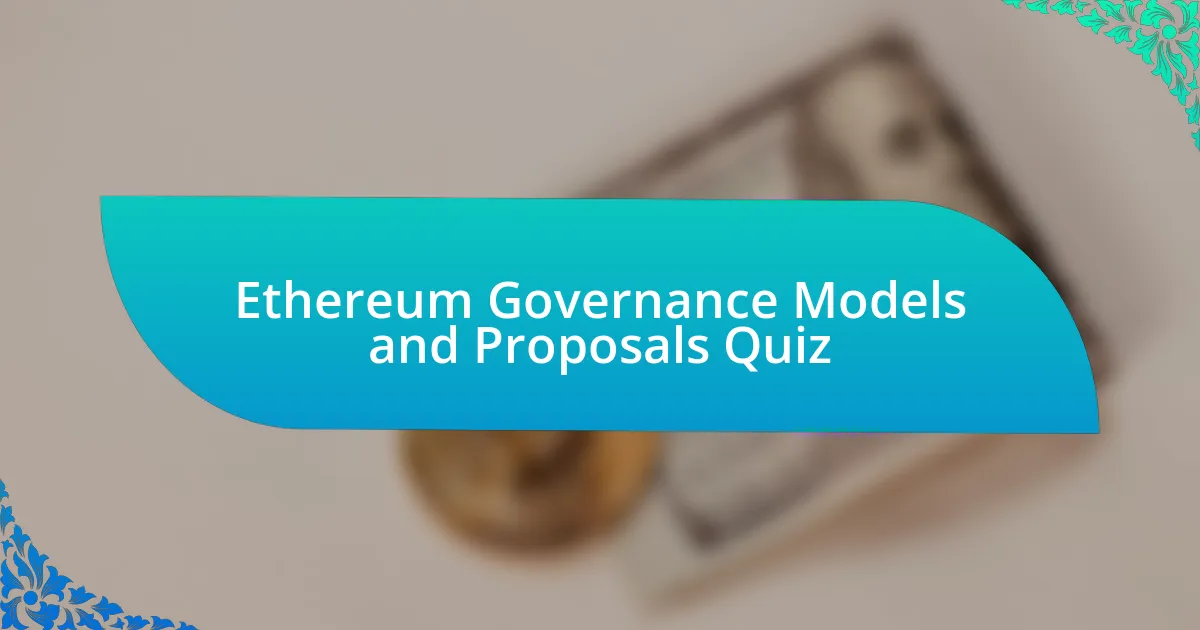
Start of Ethereum Governance Models and Proposals Quiz
1. What is the primary mechanism for governance in Ethereum?
- Ethereum Blockchain Standards (EBS).
- Ethereum Core Development (ECD).
- Ethereum Decentralized Apps (dApps).
- Ethereum Improvement Proposals (EIPs).
2. Who can submit an Ethereum Improvement Proposal (EIP)?
- Anyone in the Ethereum community with enough technical proficiency.
- Only Ethereum Foundation members can submit.
- Only Ethereum developers can submit.
- Only large ETH holders can submit.
3. Where are EIPs submitted?
- Bitbucket
- GitLab
- SourceForge
- GitHub
4. What is the purpose of EIPs?
- To propose changes or additions to the Ethereum protocol.
- To design new cryptocurrencies.
- To audit Ethereum smart contracts.
- To create decentralized applications.
5. What is the process for implementing an EIP?
- The Ethereum community engages in extensive discussions to reach a `rough consensus` on whether the proposed changes will be implemented.
- EIPs are automatically accepted without discussion or review.
- Proposals are directly submitted to the Ethereum Foundation for approval.
- Implementation is decided solely by core developers with no community input.
6. Who are the key stakeholders involved in Ethereum governance?
- Just application users and core developers.
- Only the Ethereum Foundation and developers.
- ETH holders, application users, application developers, node operators, validators, and core developers.
- Miners and large token holders.
7. What is the role of node operators in Ethereum governance?
- Node operators manage the transactions that occur on the Ethereum blockchain.
- Node operators vote on which software versions to run, adding a tangible aspect to Ethereum’s decentralized governance.
- Node operators exclusively verify smart contracts for security compliance.
- Node operators are responsible for creating new Ethereum blocks and approving EIPs.
8. How does Ethereum handle on-chain voting?
- Ethereum does not use on-chain voting; instead, it employs off-chain governance.
- Ethereum relies solely on smart contracts for voting purposes.
- Ethereum uses on-chain governance entirely to make decisions.
- Ethereum voting is conducted through a centralized authority.
9. Why does Ethereum prefer off-chain governance?
- To enhance security against external attacks.
- To allow quicker updates to the protocol.
- To increase transaction speeds and efficiency.
- To prevent power centralizing in a small group.
10. What are the challenges of off-chain governance in Ethereum?
- Centralization of power among validators and developers.
- High network fees and slow transaction times.
- Lack of transparency and objective assessment of the decision-making process.
- Inability to accurately track token holdings and ownership.
11. Where do lively discussions on governance take place in the Ethereum community?
- Ethereum Foundation meetings
- Private chat groups
- Developer conferences
- Ethereum All Core Developers calls
12. What is the role of decentralized application (dApp) developers in Ethereum governance?
- They create financial reports for stakeholders.
- They manage mining operations and consensus mechanisms.
- They develop features and perform upgrades based on user needs.
- They oversee legal compliance and regulatory matters.
13. How does the Ethereum community ensure transparency in governance?
- By having a centralized committee review all proposals.
- Through periodic audits conducted by external agencies.
- Through extensive discussions and the use of online forums like Discord, GitHub, and Ethereum Magicians.
- By implementing strict regulations and monitoring all transactions closely.
14. What is the significance of Ethereum Improvement Proposals (EIPs) in the governance process?
- EIPs are used for trading Ethereum on exchanges.
- EIPs serve as the standard for proposing changes to Ethereum.
- EIPs are a protocol for storing Ethereum securely.
- EIPs are guidelines for Ethereum marketing strategies.
15. What is the term for reaching a consensus on proposed changes in the Ethereum community?
- Compromise decision
- Soft agreement
- General acceptance
- Rough consensus
16. How are EIPs created?
- EIPs are only created by core developers through private meetings.
- EIPs are generated automatically by the Ethereum blockchain itself.
- EIPs can only be proposed during Ethereum network upgrades.
- EIPs can be created by anyone in the Ethereum community with enough technical proficiency via GitHub.
17. What information must be included in an EIP?
- Financial projections and investment strategies.
- Rationale, technical specifics, and security considerations.
- Historical context and marketplace analysis.
- User testimonials and marketing strategies.
18. What is the next step after an EIP is created?
- Feedback from the community.
- Implementation of the proposal.
- Release of the new features.
- Immediate voting by ETH holders.
19. Who initiates the governance process with EIPs?
- ETH holders
- Core developers
- Validators
- EIP authors
20. What is the role of the Ethereum Foundation in governance?
- The Ethereum Foundation spearheads the governance process, which is conducted through online forums.
- The Ethereum Foundation decides all blockchain transactions and records.
- The Ethereum Foundation holds regular elections for governance leaders.
- The Ethereum Foundation issues Ethereum tokens to all developers.
21. How does Ethereum ensure that governance decisions are not influenced by large ETH whale holders?
- By allowing only core developers to make all decisions regarding the protocol.
- By prohibiting any discussion about governance among smaller holders.
- By moving the decision-making process away from the blockchain and into the hands of stakeholders.
- By implementing a voting system where the majority of ETH holders dictate all outcomes.
22. What is the primary concern with off-chain governance in Ethereum?
- The lack of traceability and objective assessment of the decision-making process.
- The centralization of power among developers.
- The overreliance on smart contracts for decision making.
- The absence of voting rights for community members.
23. What is the significance of decentralized decision-making in Ethereum governance?
- It allows only ETH holders to have a say in governance matters.
- It centralizes power among developers, restricting community involvement.
- It ensures all decisions are made quickly without discussion.
- It fosters a democratic and open environment, but can also lead to slower decision-making and potential disagreements within the community.
24. What is an example of a notable Ethereum Improvement Proposal (EIP)?
- EIP-1559, which introduced a new fee structure.
- EIP-721, which aimed to enhance security protocols.
- EIP-3000, which suggested changes to network governance.
- EIP-20, which proposed a new token standard.
25. Where can Ethereum Improvement Proposals (EIPs) be read?
- https://ethereum.org/.
- https://github.com/.
- https://discordapp.com/.
- https://eips.ethereum.org/.
26. What is the term for the process of validating transactions in a distributed ledger technology?
- Block reward
- Transaction fee
- Data replication
- Consensus algorithm
27. Which consensus algorithm does Ethereum currently use?
- Proof-of-Work (PoW)
- Proof-of-Stake (PoS)
- Practical Byzantine Fault Tolerance (PBFT)
- Delegated Proof-of-Stake (DPoS)
28. What is the role of validators in Ethereum governance?
- Validators vote on which software versions to run, adding a tangible aspect to Ethereum’s decentralized governance.
- Validators manage the Ethereum blockchain`s financial transactions and assets.
- Validators create new blocks and verify transactions in the network.
- Validators develop new applications and features for the Ethereum platform.
29. How does Ethereum ensure that the governance process is inclusive?
- By limiting participation to large ETH holders.
- By conducting secret meetings for decision-making.
- By assigning decisions to a single central authority.
- Through extensive discussions and the use of online forums like Discord, GitHub, and Ethereum Magicians.
30. What is the primary method by which the Ethereum community reaches consensus on proposed changes?
- Centralized decision-making
- Rough consensus
- Hard fork
- On-chain voting

Quiz Successfully Completed!
Congratulations on finishing the quiz about Ethereum Governance Models and Proposals! This experience not only tested your knowledge but also provided insights into how Ethereum’s governance works. You may have discovered the importance of community involvement and the role that different proposals play in shaping the network’s future. Understanding these concepts is crucial for anyone interested in the evolving world of decentralized finance.
Throughout this quiz, you learned about various governance frameworks and how they impact decision-making within the Ethereum ecosystem. Concepts like on-chain governance, off-chain discussions, and the significance of Ethereum Improvement Proposals (EIPs) were key highlights. These topics are critical for grasping the collaborative nature of Ethereum’s development and the innovative solutions that arise from it.
We invite you to dive deeper into the subject! Check out the next section on this page focused on Ethereum Governance Models and Proposals. It contains valuable information that can further enhance your understanding. Expanding your knowledge on these topics is a great way to stay informed and engaged in the rapidly changing landscape of blockchain technology. Happy learning!

Ethereum Governance Models and Proposals
Introduction to Ethereum Governance Models
Ethereum governance models refer to the frameworks and processes used to make decisions regarding the development and management of the Ethereum network. These models involve community stakeholders, developers, and users. They aim to facilitate consensus on protocol upgrades, improvements, and policies. The unique decentralized nature of Ethereum promotes a collaborative environment where diverse opinions contribute to the evolution of the network.
The Role of Ethereum Improvement Proposals (EIPs)
Ethereum Improvement Proposals (EIPs) are standardized documents used to propose changes or improvements to the Ethereum network. Each EIP outlines the rationale, technical specifications, and potential impacts of proposed changes. EIPs can range from minor adjustments to major protocol upgrades. They serve as a formal way for contributors to suggest enhancements and for the community to evaluate and discuss the implications of such proposals.
Community Involvement in Governance
Community involvement is a crucial aspect of Ethereum governance. Stakeholders engage in discussions, provide feedback on EIPs, and participate in governance forums. This collaborative approach ensures that diverse viewpoints are considered. Community-driven decisions help to maintain the integrity and responsiveness of the Ethereum network. Active user participation influences the direction of Ethereum’s development.
Consensus Mechanisms and Their Impact on Governance
Consensus mechanisms are critical to the governance of Ethereum. Currently, Ethereum uses a Proof of Stake (PoS) model, implemented in the Ethereum 2.0 upgrade. PoS affects governance by enabling stakers to participate directly in decision-making processes. Their stake in the network incentivizes alignment with the community’s interests. This shift from Proof of Work to PoS significantly alters governance dynamics, impacting how decisions are made and implemented.
Challenges in Ethereum Governance Models
Ethereum governance faces several challenges. Disagreements among stakeholders can lead to fragmentation or hard forks. The complexity of technical proposals can alienate less technical users from the discussion. Additionally, balancing developer influence with community input remains an ongoing issue. These challenges require continuous adaptation to ensure effective governance and a cohesive community. Addressing them is vital for Ethereum’s long-term growth and stability.
What are Ethereum Governance Models?
Ethereum governance models refer to the frameworks and mechanisms that dictate how decisions are made regarding the development and management of the Ethereum network. These models encompass various approaches, including on-chain governance, off-chain governance, and community consensus mechanisms. Each approach influences how proposals for network upgrades or changes are debated and executed, reflecting the decentralized nature of Ethereum. For instance, the Ethereum Improvement Proposal (EIP) process serves as a formal way for developers to propose changes or enhancements to the network.
How does Ethereum governance facilitate proposals?
Ethereum governance facilitates proposals through a structured process that allows community members to submit, discuss, and vote on changes to the network. Proposals are typically initiated as Ethereum Improvement Proposals (EIPs), which must follow a specific template outlining the motivation, specification, and rationale behind the proposed changes. This process encourages community engagement and feedback, ensuring that proposals are thoroughly vetted before implementation.
Where can community discussions about Ethereum governance take place?
Community discussions about Ethereum governance can take place in various online platforms, including forums, GitHub repositories, and social media channels. Notably, the Ethereum Magicians forum serves as a collaborative space for discussing EIPs and governance-related topics. GitHub is commonly used for tracking EIPs, while platforms like Discord and Reddit enable real-time discussions among stakeholders and developers interested in network governance.
When are governance proposals typically reviewed in Ethereum?
Governance proposals in Ethereum are typically reviewed during the EIP proposal lifecycle, which includes stages such as drafting, discussion, and final acceptance. The review process can vary in duration but generally occurs over weeks or months, allowing ample time for feedback from the community and developers. Significant updates often coincide with Ethereum network upgrades, which happen on a predetermined schedule, such as during a Hard Fork.
Who participates in Ethereum governance?
Participation in Ethereum governance involves a diverse group of stakeholders, including developers, miners, validators, and community members. Developers are primarily responsible for proposing changes through EIPs, while miners and validators participate by voting on consensus changes and network upgrades. Additionally, community members contribute to discussions and feedback, ensuring that a wide range of perspectives is considered in the governance process.

